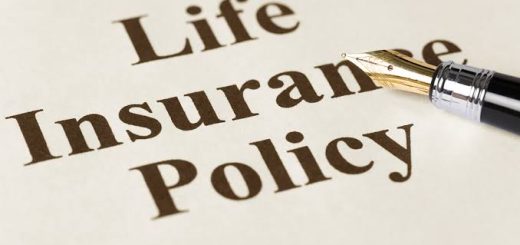Guide on How to Claim Third-Party Insurance in Nigeria (2024)
Have you been involved in an accident in Nigeria while driving a vehicle insured with third-party coverage? If so, you’re not alone.
Accidents can happen to anyone, and for you to navigate the claims process, it can be very stressful.
But do not worry! This guide is here to help you understand your rights and walk you through the steps of claiming third-party insurance in Nigeria easily.
Third-party insurance is a mandatory requirement for all vehicles plying Nigerian roads. SEE PENALTY FOR NOT DRIVING WITH CAR INSURANCE IN NIGERIA.
It is the cheaper car insurance option that protects you from financial responsibility for damages caused to another person or their property during an accident where you are at fault.
If you understand what your policy entails and follow the proper procedures, you can be sure that it would be easy to have a smoother claims experience and receive the compensation you rightly deserve.
DOCUMENTS REQUIRED TO SUBMIT A CLAIM
To hasten the claim process, you must be prepared to submit the necessary documentation when you report the accident.
The documents typically includes:
- A completed claim form (usually provided by your insurer)
- A copy of the police report filed after the accident
- Photographs clearly showing the damage to all vehicles and surrounding property involved
- A copy of your vehicle registration certificate
- A copy of your valid driver’s license
- A copy of your third-party insurance policy document
HOW TO CLAIM THIRD-PARTY INSURANCE IN NIGERIA IN 2024
Below are the ten (10) steps to file a third-party insurance claim in Nigeria:
STEP 1: FIRST NOTIFY THE INSURANCE COMPANY
As soon as possible, let your insurance provider know about the event or mishap that led to the claim.
It is imperative to promptly notify the insurance company of the incident in accordance with most policies.
Most insurance companies in Nigeria require you to report the accident within a specific timeframe, typically 24-48 hours.
If you delay in notifying them, it could potentially impact your claim’s validity.
The preferred method you will use in reporting will vary depending on your insurer.
Some companies may offer online claim forms, phone hotlines, or email addresses dedicated to claims intake.
Try to check your policy documents or contact your insurance company directly for their preferred reporting method.
STEP 2: GATHER INFORMATION
Compile all important incident-related data.
This should contain information about the parties concerned, including names, contact data, and specifics of the insurance policy.
If possible, get details from any witnesses who were there when the incident occurred.
STEP 3: RECORD THE EVENT
Capture images or videos of the collision site, the losses suffered, and any injuries received.
This visual documentation will help you substantiate your claim and demonstrate the full extent of the damages.
STEP 4: FILE A POLICE COMPLAINT
It is advisable to file a police complaint if there are severe injuries or losses.
Go to the closest police station and give a thorough report of what happened.
Get a copy of the police report; your insurance company will need it.
STEP 5: FILL OUT THE CLAIM FORM
You can download or get the claim form from your insurance provider’s website.
Provide all relevant information concerning the occurrence, the people involved, and the damages sustained when completing the form with accuracy.
Please include any needed supporting documentation (see above for the documents needed to file the claim), such as the police report and pictures.
STEP 6: FILE THE CLAIM
Send your insurance company the completed claim form along with any supporting documentation.
Whether it’s emailing, faxing, or bringing the claim in person to their office, be sure you follow their submission guidelines.
STEP 7: PROVIDE EXTRA INFORMATION
Give your insurance company any extra information or documentation they need to file your claim as soon as possible.
This could be any other pertinent evidence, such as repair estimates or medical reports.
STEP 8: PARTICIPATE IN THE INVESTIGATION
In order to confirm the facts and determine culpability, your insurance provider may look into the claim.
Your insurer will likely assign an adjuster to investigate the claim.
The adjuster may contact you for further information, request additional documentation, or arrange an inspection of the damaged vehicles.
Ensure you fully cooperate with the investigation to ensure a smooth process.
Give them all the information they need to conduct their investigation, including access to the car that was involved in the collision.
STEP 9: AWAIT CLAIM DECISION
In accordance with the terms and circumstances of the policy, the insurance provider will examine your claim, look into the incident, and determine liability.
After that, they will decide how to proceed with the claim and let you know the result.
STEP 10: CLAIM SETTLEMENT
The insurance provider will pay you for the losses and damages covered by the policy if your claim is accepted.
Medical expenditures, replacement or repair charges, and other allowable expenses could be included in the compensation.
Also maintain clear and open communication with your insurance company throughout the process.
If possible, respond promptly to their inquiries, and don’t hesitate to ask questions if anything is unclear.
The more information you provide, the better equipped they are to assess your claim accurately.
ALSO SEE: WHAT TO DO IF MY CLAIM IS DENIED BY MY INSURANCE COMPANY
CONCLUSION
It shouldn’t be difficult claiming third-party insurance in Nigeria if you know the procedures.
Once you have the understanding of your policy coverage, act promptly after an accident, and following the proper procedures, you can be sure of a smoother claims experience and receive the compensation you’re entitled to.
Remember, your third-party insurance protects you financially in the event of a car accident – utilize it effectively!
It is crucial to remember that particular steps and specifications could change based on your insurance provider and policy.
For comprehensive instructions and advice on how to submit a third-party insurance claim in Nigeria, do check the paperwork accompanying your insurance policy or get in touch with your insurance company directly.
FREQUENTLY ASKED QUESTIONS (FAQ)
Here are answers to some commonly asked questions about claiming third-party insurance in Nigeria:
CAN I CLAIM IF I AM PARTIALLY AT FAULT?
The answer to this question depends on the degree of your fault in the accident.
Third-party insurance typically covers situations where you are deemed primarily responsible for the accident.
If both parties share blame, there is a concept called “contributory negligence” and it might apply.
In such cases, the compensation to be awarded by your insurance company might be reduced based on the percentage of fault attributed to you.
It’s best to discuss the specifics of your situation with your insurance provider for a more accurate assessment.
WHAT HAPPENS IF THE OTHER PARTY DOESN’T HAVE INSURANCE?
Unfortunately, if the other driver involved in the accident lacks valid insurance, your third-party policy won’t cover their damages.
However, you might still be able to pursue compensation through other legal means.
This can be a complex process, so its best to consult a lawyer.
HOW LONG DOES THE CLAIM PROCESS TYPICALLY TAKE?
The timeframe for processing a third-party insurance claim can vary depending on the complexity of the accident, the extent of damage, and your insurance company’s internal procedures.
Generally, it can take anywhere from a few weeks to several months.
Try to maintain clear communication with your insurer and promptly submit all requested documents to help quicken the process.



